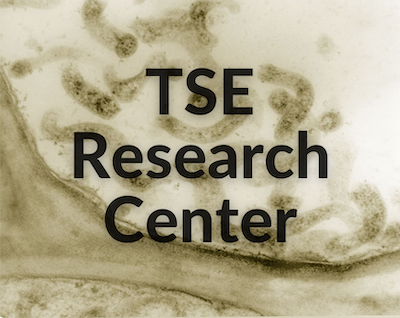Here is a summary of Dr. Bastian's new patent as well as a virtual podcast describing the patent and some of it's implications.
This U.S. Patent describes a novel spirulin protein found in Spiroplasma sp. bacteria, which is associated with Chronic Wasting Disease (CWD) in deer and other animals, as well as Creutzfeldt-Jakob Disease (CJD) in humans. The patent details diagnostic methods and devices, like ELISA and lateral flow assays, that use this protein and monoclonal antibodies developed against it to detect transmissible spongiform encephalopathies (TSEs). These methods aim to provide faster and more accurate diagnosis of these diseases in both live animals and post-mortem samples, including various body fluids and tissues, offering an improved approach to TSE surveillance and management.
The patented diagnostic method fundamentally advances Transmissible Spongiform Encephalopathies (TSE) detection in animals in several key ways, primarily by enabling live animal testing and targeting a novel microbial protein, which contrasts with previous post-mortem and prion-focused approaches.
Key advancements include:
•
Live Animal Testing: Traditionally, TSE diagnoses, including Chronic Wasting Disease (CWD) in animals and Creutzfeldt-Jakob disease (CJD) in humans, have relied on post-mortem pathological examination of brain or rectal lymphoid tissue. This patented method introduces a "live test" for TSEs in animals and humans. This makes it possible to screen animals while they are alive, which is critical for herd management and for assessing hunted animals.
•
Novel Target for Detection: Unlike conventional TSE diagnostics that primarily focus on detecting the misfolded host prion protein (PrPSc), which can be problematic to detect early or reliably, this invention targets a novel spiralin protein found on the membrane of a Spiroplasma species. This Spiroplasma has been isolated from CWD-infected deer and found to be associated with various TSEs. By detecting the Spiroplasma itself or its components, the method aims to identify the "actual microbe" or infectious agent, rather than just an aberrant host protein. The Spiroplasma is described as an extremophile bacteria that can proliferate in low oxygen environments characteristic of diseased brain tissue.
•
Improved Detection Capabilities:
◦
Earlier and More Accurate Detection: Detecting the microbial protein is suggested to be "easier to detect in the early stages" of the disease compared to prion proteins. The method is described as "simpler and more accurate".
◦
Speed: The lateral flow test described in the patent can provide results rapidly, typically within 5-10 minutes, and potentially less than an hour.
◦
Less Invasive Sampling: The live test can utilize various body fluids such as urine, blood, semen, milk, cerebrospinal fluid, or eye fluids (vitreous humor, aqueous fluid), making sampling less invasive compared to tissue biopsies.
◦
Broader Applicability: The Spiroplasma sp. has been found associated with "all forms of TSE," suggesting its potential for broader application across different TSEs and animal species like deer, sheep, and bovine.
•
Fundamental Shift in Understanding: The patent's underlying premise is the discovery of Spiroplasma as a potential infectious agent in TSEs, offering a paradigm shift from the solely prion-based theory of TSEs. This allows for a diagnostic method that is not dependent on the "aberrant host protein".
Click below for the virtual podcast:


